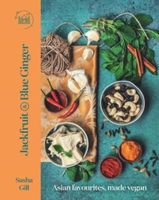Label
All
0
Clear all filters
Rice and rice flour
Appears in
By Sasha Gill
Published 2019
Someone once told me that I ate too much rice. But for me, a meal just doesn’t feel complete without it! In this book, I use a variety of rice: basmati for Indian cooking, jasmine for Thai and Malaysian food, sushi rice for Japanese cooking, and glutinous rice for desserts. While you might be tempted to buy just one type of rice for all these recipes, hear me out on this one. Each grain is different. Basmati is a slender, long-grain rice which is drier and has a nutty flavour, making it a perfect bed for thick gravies and rich curries. Jasmine is also a long-grain rice, but that’s where the similarities end. Jasmine has a coconutty, pandan-like taste, and it pairs beautifully with the aromatics of Malaysian and Thai cooking. Sushi rice is a short-grain rice and is a lot more starchy than the previous two. It becomes sticky when cooked, and this allows it to be shaped for sushi, typically seasoned with vinegar and sugar. Lastly, glutinous rice (also called sticky rice, sweet rice or mochi rice) is also a short-grain rice that’s commonly used for sweet dishes – despite the name, it’s completely gluten-free. Unlike most rice, it is almost always cooked in a steamer, and this means it retains its bite. It is commonly used in puddings. You should find the first three types of rice at your local supermarket, but sticky rice may prove a bit trickier – check online or in Asian grocery stores. Glutinous rice flour is also used in the book; you should be able to find it online or at a Chinese supermarket.
Part of
Advertisement
Related Recipes
-
-
-
-
Related Reference
-
-
-
-
Advertisement
The licensor does not allow printing of this title



